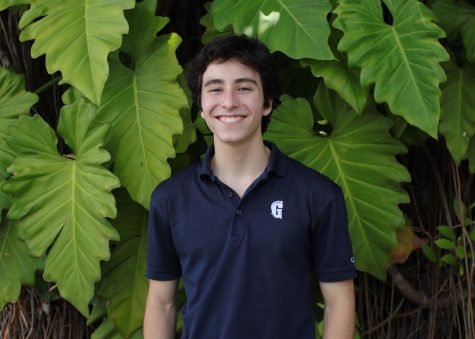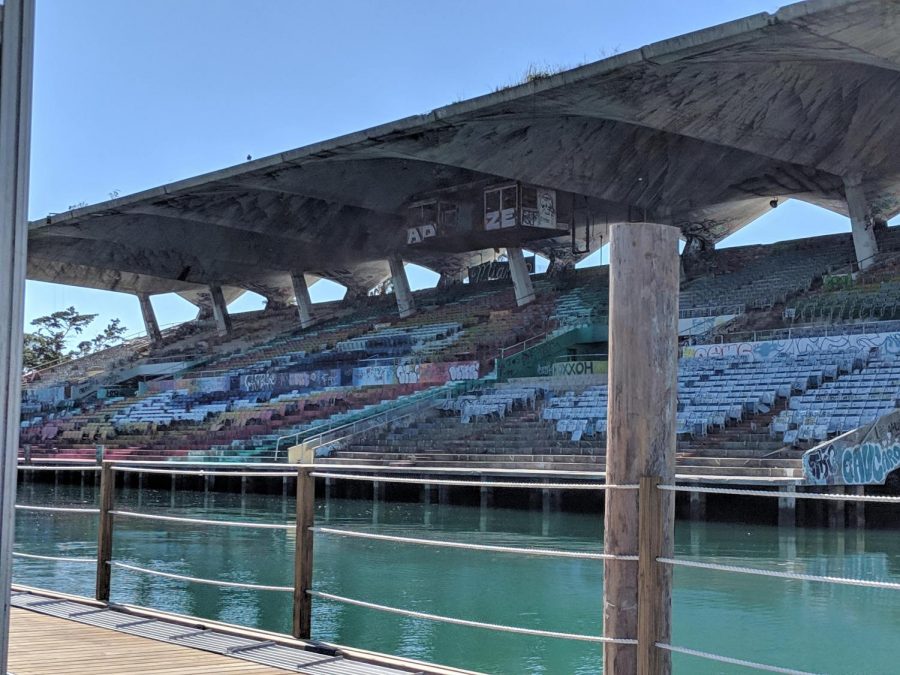Abandoned Miami: Marine Stadium
Among many of Miami’s forgotten treasures is Miami Marine Stadium. Since the sixties, it’s hosted celebrities, water sports and boat shows, but now it remains an unused spectacle on Virginia Key.
Among one of the many forgotten historic treasures in Miami is the marine stadium. Meant to be a monumental racecourse for speedboats and water shows, it was originally dreamt up in 1962, after the City of Miami hired a Chicago firm to draft up a master plan for a new park located on Virginia Key, right off the Rickenbacker Causeway.
This all came at a period in time when water sports were exploding in popularity throughout America. The stadium was built to be the world’s first arena specifically designed for powerboat racing, while also hosting a variety of other events, such as concerts and regattas. The outstanding piece of architecture was designed by architect Hilario Candela, a 28-year-old Cuban immigrant. At the time, there was conflict between the City of Miami and the architect, as the city was looking for something simple that wouldn’t cost too much. Meanwhile, Candela felt that the stadium should be constructed with concrete to protect it from both the salt air and water. In response to the city’s objections that the stadium should be built for no more than $1 million, Candela promised that if it went over budget he’d build it for free. With the agreement of the city, they went ahead with his plan.
After six months of construction, the Ralph Munroe Marine Stadium opened on December 27, 1963. Against all odds, the stadium was completed under budget, at $960,000. This stadium, which was made with a combination of concrete and steel, resulted in a structure which managed to withstand multiple hurricanes throughout the years, and continues standing to this day. The stadium could accommodate seven thousand people and hosted hundreds of events in its lifetime, its most significant including multiple performances by Gloria Estefan, a 1967 filming for Elvis Presley’s film, Clambake, and appearances to multiple events by former President Richard Nixon.
By the time the 1980s rolled around, the Miami Marine Stadium went through a decline in popularity, stemming from the constant barrage of hurricanes and competition with other venues. The last race it ever hosted was the 1987 Inboard hydroplane national championship. By the time the 90’s rolled around, it had little prominence in the Miami spotlight. The final hit came with Hurricane Andrew in 1992, which caused engineers to find cracks in the foundation of the stadium.
In the present day, the stadium has become a utopia for graffiti artists and skaters, who used to flock to its roof over a shady catwalk. The stadium now hosts beautiful, elaborate art from graffiti artists.
Ever since 2008, the Friends of Miami Marine Stadium (FMMS) group has supported the restoration of the stadium. Thanks in part to the efforts of the group, it’s been recognized as an architectural masterpiece, even landing a spot in the 2009 report of the 11 Most Endangered Historic Places, a report that brings light to historical buildings in danger of being demolished. Thanks to these efforts, the Marine Stadium has once more garnered public interest and is now the site of the annual Miami Boat Show. Besides this, the city has plans to renovate the space and place an $18 million park and event space at the site. Along with new marina facilities on Virginia Key. If all goes according to plan, this could lead to even more attention being brought to the historic value of the site while also reclaiming a part of Miami’s lost history.

Paulino Mercenari is a senior and the Editor-in-Chief of "The Raider Voice." He's also host of the Prepcast. Besides writing for the newspaper, Paulino...

